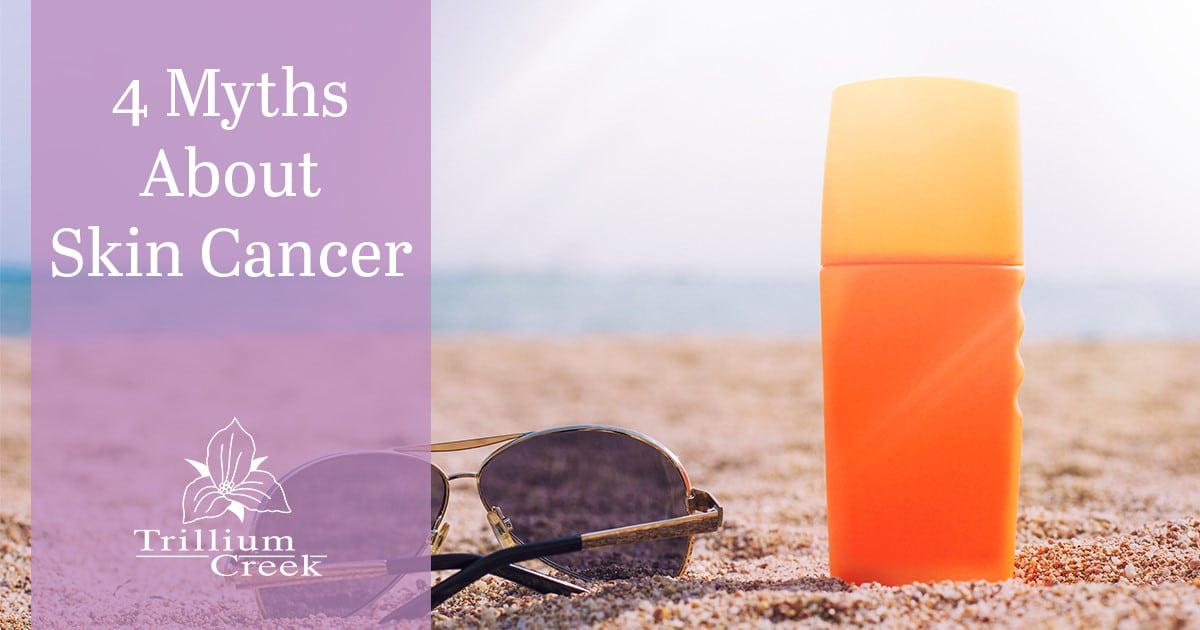
We’ve covered what skin cancer looks like, wondered if you should get a preventative screening and also tackled what to expect during one. Up next, a few common myths when it comes to skin cancer:
1. Tanning beds are safer than the sun – FALSE.
Not only does ultraviolet light from tanning beds put you at a higher risk for developing skin cancer, it can also cause wrinkles, sun spots and/or freckles. According to the Skin Cancer Foundation, people who first use a tanning bed before age 35 increase their risk for melanoma by 75 percent. If you must get your glow on, consider using sunless tanning products.
2. It’s cloudy outside, we’ll be fine! – FALSE.
As much as 80 percent of the sun’s UV rays can pass through clouds. In the winter months, snow can reflect up to 80 percent of UV rays. That means if you hit the slopes, you better lather on that sunscreen. You should always apply sunscreen when you’ll be outdoors, no matter the weather. Both UVA and UVB cause sunburns and damages the skin, which can lead to skin cancer. Look for a sunscreen that provides protection from both, called “broad-spectrum.”
3. Skin cancer really isn’t that big of a deal – FALSE.
It is true that the most common types of skin cancer are not nearly as lethal as other forms of cancer. However, the American Cancer Society estimates about 8.7 million people are diagnosed with the two most common types of skin cancer each year — basal cell carcinoma and squamous cell carcinoma. While death rates for the most sever type of skin cancer, melanoma, are much lower than say, lung cancer, skin cancer can be extremely destructive to the parts of the body it affects.
4. I have a dark complexion, I don’t need to wear sunscreen – FALSE.
While people with medium to dark complexions are less sensitive to UV exposure, they can still develop malignancies and suffer UV skin damage. Another thing to note, the FDA says certain oral and topical medicines, such as antibiotics, birth control pills, benzoyl peroxide products and some cosmetics, may increase skin and eye sensitivity to UV rays in all skin types.
How to protect your skin: Sunscreen
This is a no brainer! Even in the dead of winter you can get a sunburn. Fun fact: Glass only filters out one kind of radiation – UVB rays. That means UVA rays can still get to your skin. Why do so many adults who drive have more freckles on their left side than the right? Bingo!
When applying sunscreen, it is important to note that if applied incorrectly, you may actually decrease the SPF factor by up to a half. Example: if you under-apply your SPF 30 sunscreen by half, you may only get the protection level of SPF 15 or lower. If you’re ever unsure of your sunscreen application skills, bumping up the SPF is your best option. 50 SPF is the best!
A yearly skin cancer screening by your Trillium Creek skin care provider is also an essential tool in the fight against skin cancer.
About Trillium Creek Dermatology: Few places in the country offer the quality care, innovation and state-of-the-art procedures that are available at Trillium Creek. Through our integrative medicine approach, Trillium offers world-class general dermatology, dermatologic surgery, laser surgery, cosmetic dermatology, skin cancer treatment, Mohs surgery and holistic medicine.


